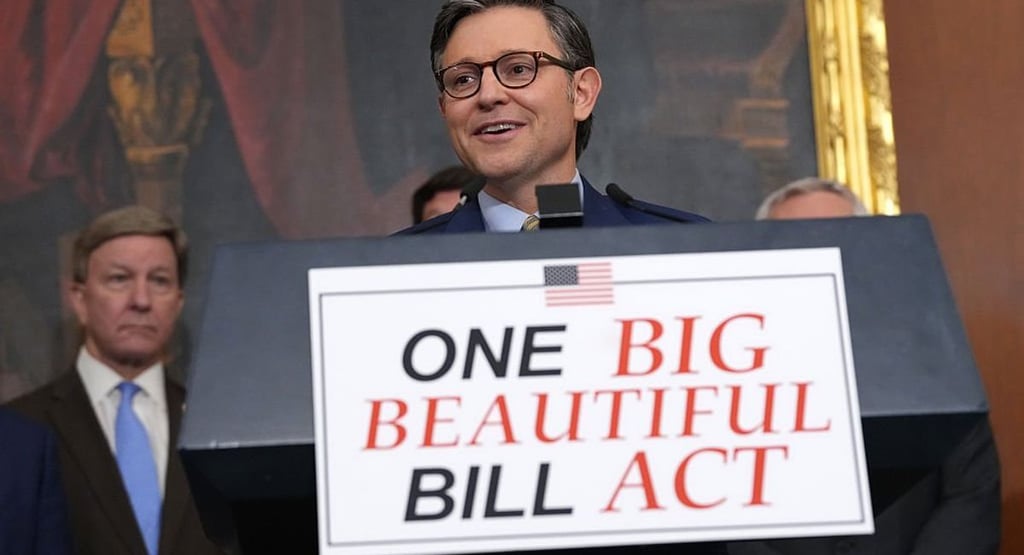The ‘Big Beautiful Bill’: A Trillion-Dollar Bet Against Our Future
Kate Wexell
7/9/20253 min read


The nation now grapples with the reality of President Trump’s “One Big Beautiful Bill.” The question is no longer whether we can afford to reverse course, but what the true cost of this reversal will be for our climate and our economy.
This new law systematically dismantles most provisions of the Inflation Reduction Act (IRA), which was a landmark climate investment passed in 2022. The act provided over thirty tax credits and deductions for businesses, individuals, and communities making clean energy improvements in their daily lives.
It was projected to reduce US carbon emissions by nearly 40% by 2030. That critical progress is gone.
While proponents of the new bill claim short-term budget alleviation, this comes at the expense of the IRA’s long-term mitigation benefits. More critically, dismantling the IRA strips away tangible hope and an enhanced quality of life for millions of Americans who were just beginning to benefit.
The Inflation Reduction Act
I grew up in the suburbs of St. Louis, Missouri. Summer days frequently reach temperatures in the high 90s and low 100s, paired with a harsh, swampy humidity.
As an intern in 2023 for Renew Missouri, a renewable energy policy firm, we developed a tool called “Missouri Saves” that helped Missouri residents find energy efficiency rebates.
The IRA allowed us to help thousands upgrade their air conditioning units, saving them money on brutal summer electric bills, making their homes more sustainable, and, crucially, helping prevent the dozens of heatstroke deaths occurring annually.
Initial IRA projections by the Senate Democrats aimed to raise $739 billion, invest $433 billion in energy security and climate change, and cut the federal deficit by $300 billion over a decade. It was set to create 1.5 million jobs in infrastructure development and labor by 2030.
Implications of the One Big Beautiful Bill
Now, with the passage of the “One Big Beautiful Bill,” President Trump delivers on a different path, promising lower spending. Yet analyses by the Committee for a Responsible Federal Budget demonstrate that the Bill will increase the federal deficit by $3 trillion over the next decade.
The new law repeals EV tax credits, phases out energy investment credits, and reforms other IRA credits. While this might appear to “save” an estimated $851 billion over ten years by ending these provisions, this figure ignores the far greater costs we now invite.
What’s More Important? Sustainability or Short-Term Economics?
This brings us to the core of economic sustainability. In the short term, cutting out the IRA provides an illusion of saving money.
However, the climate crisis already carries a staggering price tag. Since 1980, the US has endured 403 weather and climate disasters costing over $1 billion each. This totals more than $2.9 trillion — an average of nearly $65 billion annually. The “One Big Beautiful Bill” virtually guarantees these costs will escalate dramatically if left unchecked.
Already, the US Treasury Department reported that over 3.4 million American families claimed more than $8 billion in residential clean energy and home efficiency credits in 2023 alone. This demonstrates a growing uptake, not a failing program. All this progress has been halted.
When I saw people utilizing the IRA, there was hope that individual actions could make a difference. It was a hope for a better life, a cleaner planet, and lower monthly bills for families. Our reality is a retreat from a future of economic resilience. We cannot afford to ignore this reckoning.
The Path Forward
In my opinion, the largest impact of the Inflation Reduction Act was convincing ordinary families and small businesses to adopt more sustainable practices.
Now that many federal incentives have been removed, we can still advocate for state-level policy implementation.
States and cities can step up by establishing or strengthening Renewable Energy Standards (RES), updating building codes to mandate higher energy efficiency, and offering local incentives such as tax abatements or expedited permitting for green building projects. Many of these initiatives would replace what is currently lacking from the federal government.
It is vital to build broad capacity for a sustainable economy, allowing sub-national entities to fill the void left by federal retreats and continue the pursuit of a greener future.